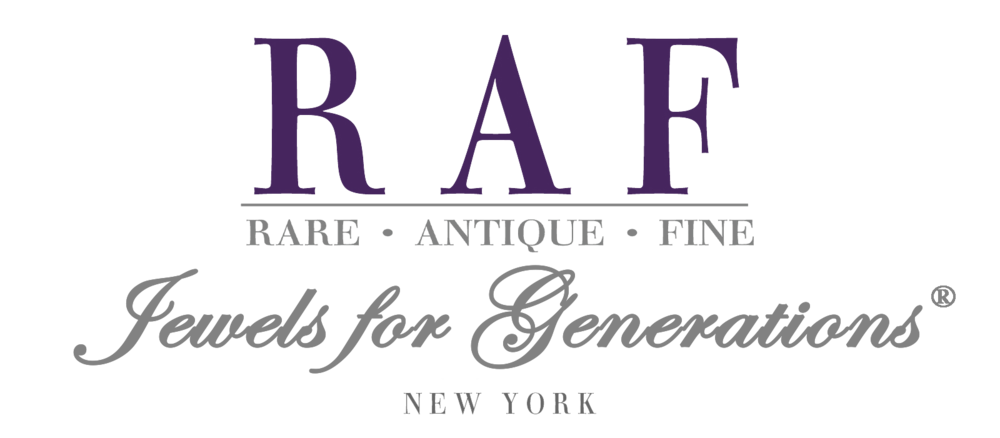LACLOCHE FRERES
Lacloche Frères was founded by four brothers, Leopold, Jacques, Jules, and Fernand Lacloche, who consolidated their finances and established their business in Paris in 1901, following the tragic death of Jacques in a train crash in 1900. The brothers worked with some of the best designers, workshops, and suppliers in Paris, building the reputation of the Lacloche name.
The remaining three brothers pooled their resources and moved to Paris, forming Lacloche Frères in 1901 and setting up shop at 15, Rue de la Paix. They were extremely selective in their choices, curating only the finest pieces and collaborating with the most esteemed designers, workshops, and suppliers in Paris, further enhancing the Lacloche brand. After the retirement of London jeweller Edwin Streeter in 1904, the Lacloche brothers acquired his inventory, including the breathtaking rose pink Agra diamond. Despite their possession of the diamond being short-lived, as they decided to auction it at Christies the following year, it nevertheless contributed to the brothers' growing reputation as leaders in the jewellery world.
By 1908, the company had seven European store locations, and they produced a wide range of beautiful jewellery and timepieces, including a pendant watch created through a collaboration between Lalique, Verger, Vacheron Constantin, and enameller Paillet. In 1917, Lacloche bought the remaining stock of Fabergé’s London store.
However, it was in the 1920s, during the Art Deco period, that Lacloche Frères truly came into their own. They produced some of the finest and most creative jewellery, clocks, and ladies' accessories of the era. Their pieces included tiaras, diamond bracelets, colorful gem-set jabot pins, mother-of-pearl inlaid clocks, and vanity cases. The brothers drew inspiration from Chinese and Japanese art and culture, resulting in their jeweled cigarette cases, necessaires, and other accessories featuring a wide variety of decorative materials, shapes, and designs.
While it was important to keep up with fashionable trends, commercial appeal was equally vital, and it's worth noting that pieces from this era were more aligned with mainstream diamond and gem-set designs, rather than the bolder Art Nouveau styles that were popular at the time. In 1917, Lacloche purchased the remaining stock of Fabergé's London store after the jeweller's wealth and assets were forcibly repatriated by the Russian government. Three years later, Jacques Lacloche, the son of the deceased Jacques and Fernand's nephew, was entrusted with running the London business after being trained by his uncles, particularly Fernand.
In the following decade, Lacloche Frères truly established itself as a leader in the jewellery industry, producing some of the most exceptional and innovative pieces of jewellery, clocks, and women's accessories of what would later be known as the Art Deco era. The range of their products was vast, including tiaras, diamond bracelets, and colorful gem-set jabot pins, as well as mother-of-pearl inlaid clocks and vanity cases. They drew inspiration from the East, incorporating motifs from Chinese and Japanese art and culture into their jeweled cigarette cases, necessaires, and other fashionable accessories, which were created in a diverse array of decorative materials, shapes, and designs, making them some of the most remarkable examples of the period. The brothers exhibited their work at the 1925 Paris Exposition des Arts Décoratifs, earning high praise and a Grand Prix for their display of dazzling jewels, including a collection of pendants and bracelets inspired by the timeless fables of Fontaine.
Unfortunately, the firm was heavily impacted by the 1929 market crash, resulting in its closure and eventual bankruptcy in 1931. Jacques Lacloche later opened a small concession at the Carlton Hotel in Cannes before returning to Paris and founding SARL Jacques Lacloche. He remained there until the early 1960s, creating bold, brilliant jewels for an elite clientele, including a sapphire and diamond brooch he designed as a wedding gift for Grace Kelly from Prince Rainier.
Lacloche Frères created many famous and exquisite works during their time, but one of their most notable pieces was the Agra Diamond. The diamond was originally acquired from London jeweler Edwin Streeter in 1904, and it weighed 28.15 carats with a rose pink hue. Lacloche Frères later auctioned off the diamond at Christie's in 1905. While the diamond itself may not have been a creation of the Lacloche Freres, its acquisition and sale helped to build their reputation as one of the most prestigious jewelers of their time.
Another famous work from Lacloche Frères is the pendant watch that was the result of a collaboration between several exceptional craftsmen including Lalique, Verger, Vacheron Constantin, and the enameller Paillet. This watch was made during the early 1900s, and it features an intricate and detailed design that is reflective of the Art Nouveau movement of the time.
During the Art Deco period, Lacloche Frères produced many famous pieces of jewelry and accessories, including tiaras, diamond bracelets, colorful gem-set jabot pins, mother-of-pearl inlaid clocks, and vanity cases. Their jewelry was often inspired by Chinese and Japanese art and culture, featuring a variety of motifs that were popular at the time. They exhibited at the 1925 Paris Exposition des Art Décoratifs to great acclaim, winning a Grand Prix for their display of fabulous jewels including a range of pendants and bracelets inspired by the classic fables of Fontaine.

